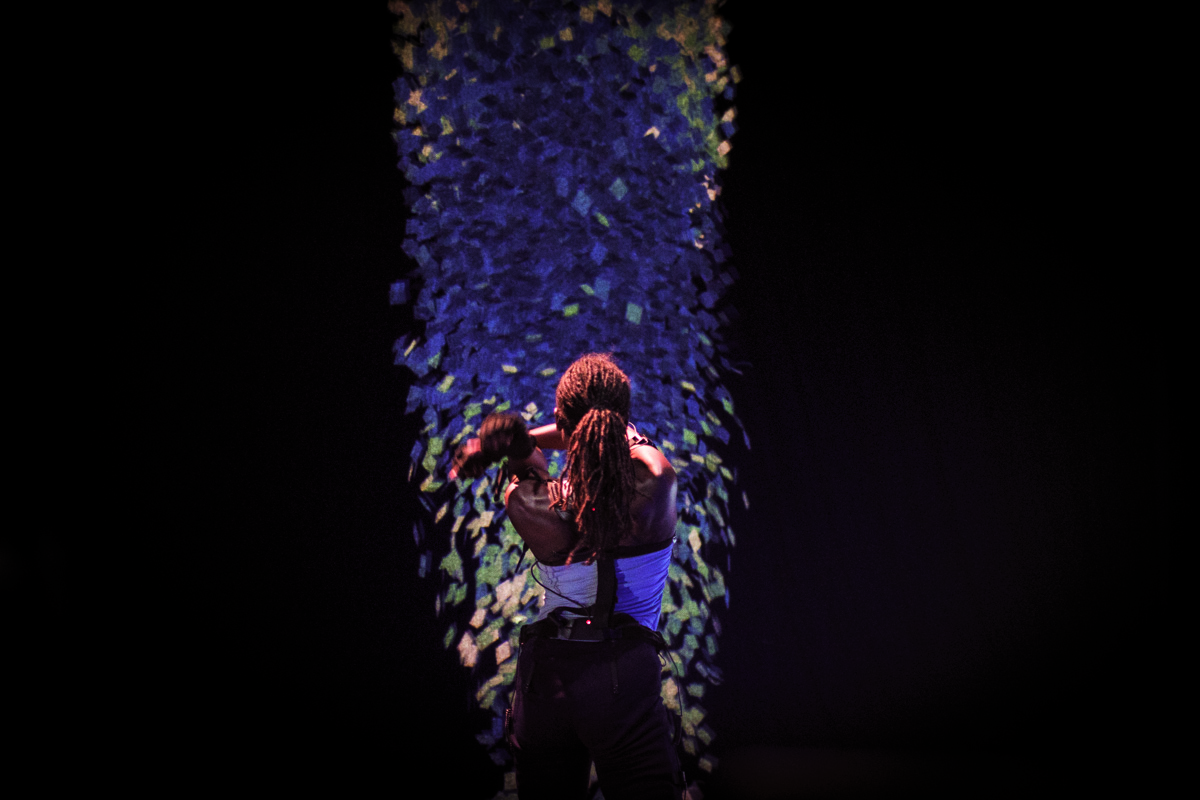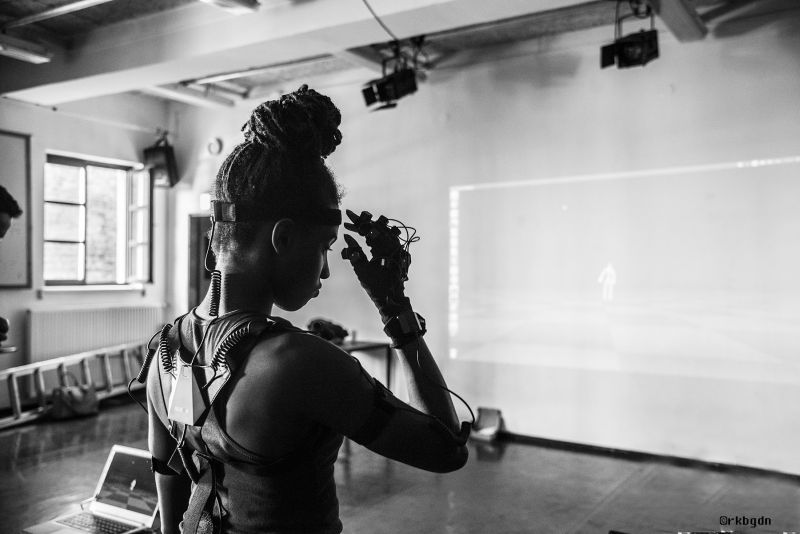AI_am: AI am here explores AI as a creative partner, where performers’ bodies and digital algorithms influence each other. It paints an alternative vision of the future where the encounter between biological and digital life forms is shaped by mutual curiosity; where the distinction between user and system is blurred.
Visualising AI
Our task was to create the embodiment of the AI system. In the process of developing concept visuals, we found a system which has the qualities of both a humanoid avatar and a swarm entity. The visual entity is made up of particles. This particle system is controlled and affected by two main forces: an armature with skinning and swarm physics. By adjusting the ratio of the two forces we can achieve a wide variety of visual representation and dynamics.
The Story of AI_am
The international collaboration AI_am investigates the potential of the artistic interaction between human and machine through contemporary dance. Founded in 2013, the project brings together experts from the fields of dance, cognitive science, graphics and coding. AI_am raises questions about artificial intelligence (AI), performing arts and their place in our modern society through art-science experiments, public presentations and workshops.
Can machines be creative? Can they inspire us to explore new artistic pathways? Could the interaction with other forms of intelligence take us beyond our creative limitations and reveal to us more about what it is to be human?
We teach machines to identify faces, understand speech and drive cars, but could they also teach us something new about ourselves? AI_am’s multimedia dance performance AI am here explores an encounter between human and an other form of intelligence. Through their interaction machine and human go through a creative learning process where they mutually inspire each other. Imagine our exchanges with machines going beyond ‘user’ and ‘system’. What if they could connect us to our past and our future? What if we humans think of machines as equal creative partners?


Photo credit: Réka Bogdán